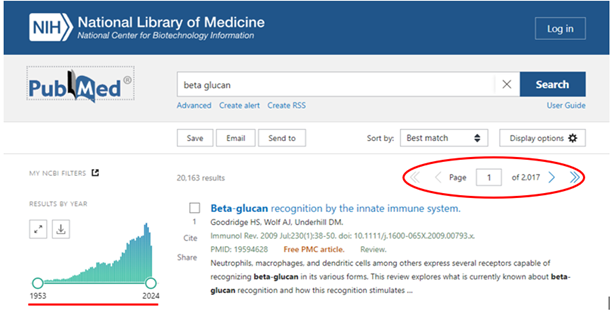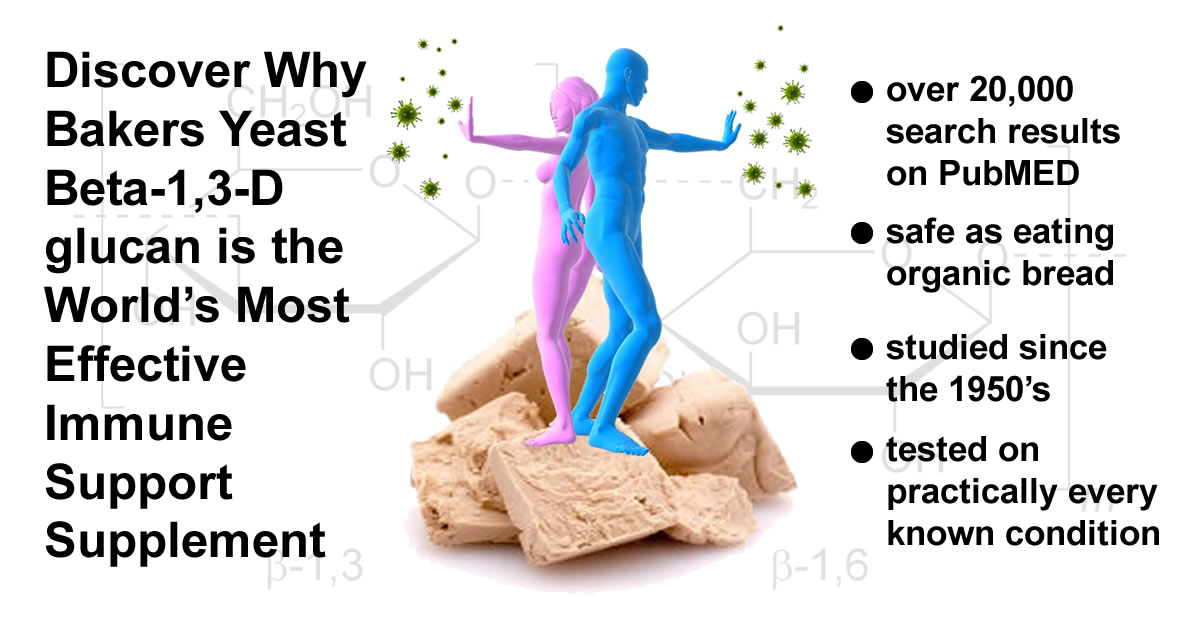Beta 1-3D Glucan
In the 1940s, research by Dr. Louis Pillemer yielded a substance that had immune activating properties called Zymosan. Although this material was able to stimulate a nonspecific immune response, it was unknown which element of this relatively crude composition was able to stimulate non-specific immunity. Zymosan activated the immune response regardless of the type of invader or pathogen that was attacking, such as viruses, bacteria, fungi, parasite, and tumors[iv]. Further research by Dr. Nicholas DiLuzio at Tulane University pinpointed the substance as Beta-1,3-D glucan. Glucan, the active component, was isolated from the cell walls of baker’s yeast[v].
In the 1970s, studies with Beta-1,3-D glucans in humans began. Beta-1,3-D glucan’s role in immune system activation was greatly advanced when in 1975 Peter W. Mansell, M.D., and colleagues reported its effects on nodules of malignant skin cancer in patients that were injected with beta-1,3-glucan. This was reported in the Journal of the National Cancer Institute[vi]. Joyce Czop, Ph.D., a researcher at Harvard University, discovered specific receptor sites for beta-glucan that matched a site on the surface of the macrophage. This research demonstrated that the macrophage, known as the “soldier” of the immune system (a white blood cell), consumes non-self foreign microbes. This process is known as phagocytosis[vii].
Work so far with non-bacterial polysaccharides has shown that glucans function by stimulating the immune system and are not themselves toxic to cells. In the 1970s and 1980s, the anti-tumor polysaccharides (glucans), Lentinan, schizophyllan, and PSK/Krestin, were isolated from three different fungal sources: Shiitake mushroom (Lentinus edodes), the split gill fungus (Schizophyllum commune), and a similar fungus Coriolus versicolor. These are all marketed for medicinal use in Japan. Subsequently, the anti-tumor effects of glucans have been shown to be a result of the action of the glucan in stimulation of immune cells, not the result of direct toxicity to tumor cells. One advantage of this approach over many traditional treatments is that immune cells already possess the capacity to recognize and destroy “sick” cells, and foreign invaders. Therefore, damage to healthy tissue is minimized by amplification of natural defenses that recognize targets as opposed to the introduction of toxic compounds into the body which kill both healthy and “sick” cells[viii]. A simple search of the term “Beta Glucan” on PubMED provides over 2000 pages of results from 1953 to the present day. These studies on high-quality Beta-1,3-D glucan cover practically every disease known to man. The key is “HIGH QUALITY”. Discover how to compare and identify a high quality low cost Beta 1 3-d glucan supplement that provides actual results by click here.

Citations
[i] Stone, B. A., & Clarke, A. E. (1992). Chemistry and Biology of (1→3)-β-Glucans. Bioscientific Publishers.
[ii] Volman, J. J., Ramakers, J. D., & Plat, J. (2008). Dietary modulation of immune function by β-glucans. Physiology & Behavior, 94(2), 276-284. doi:10.1016/j.physbeh.2007.11.045
[iii] Kofuji, K., Aoki, A., Tsubaki, K., Konishi, M., & Isobe, T. (2012). Antioxidant activity of β-glucan. ISRN Pharmaceutics, 2012, 125864. doi:10.5402/2012/125864
[iv] Pillemer, L., & Ecker, E. E. (1941). Anticomplementary factor in fresh yeast. Journal of Experimental Medicine, 73*(5), 519-533. doi:10.1084/jem.73.5.519
[v] DiLuzio, N. R., & Williams, D. L. (1978). Protective effect of glucan against systemic Staphylococcus aureus septicemia in normal and leukemic mice. *Infection and Immunity, 20*(3), 804-810. doi:10.1128/iai.20.3.804-810.1978
[vi] Mansell, P. W., Rowin, J., Hammer, H., et al. (1975). Clinical experiences with glucan in the treatment of cancer patients. *Journal of the National Cancer Institute, 55*(3), 623-626. doi:10.1093/jnci/55.3.623
[vii] Czop, J. K. (1986). The role of beta-glucan receptors on blood and tissue leukocytes in phagocytosis and immune responses. *Annals of the New York Academy of Sciences, 465*(1), 341-343. doi:10.1111/j.1749-6632.1986.tb15551.x
[viii] Mizuno, T. (1995). Development of antitumor polysaccharides from mushroom fungi. *Foods & Food Ingredients Journal of Japan, 167*, 69-85.

